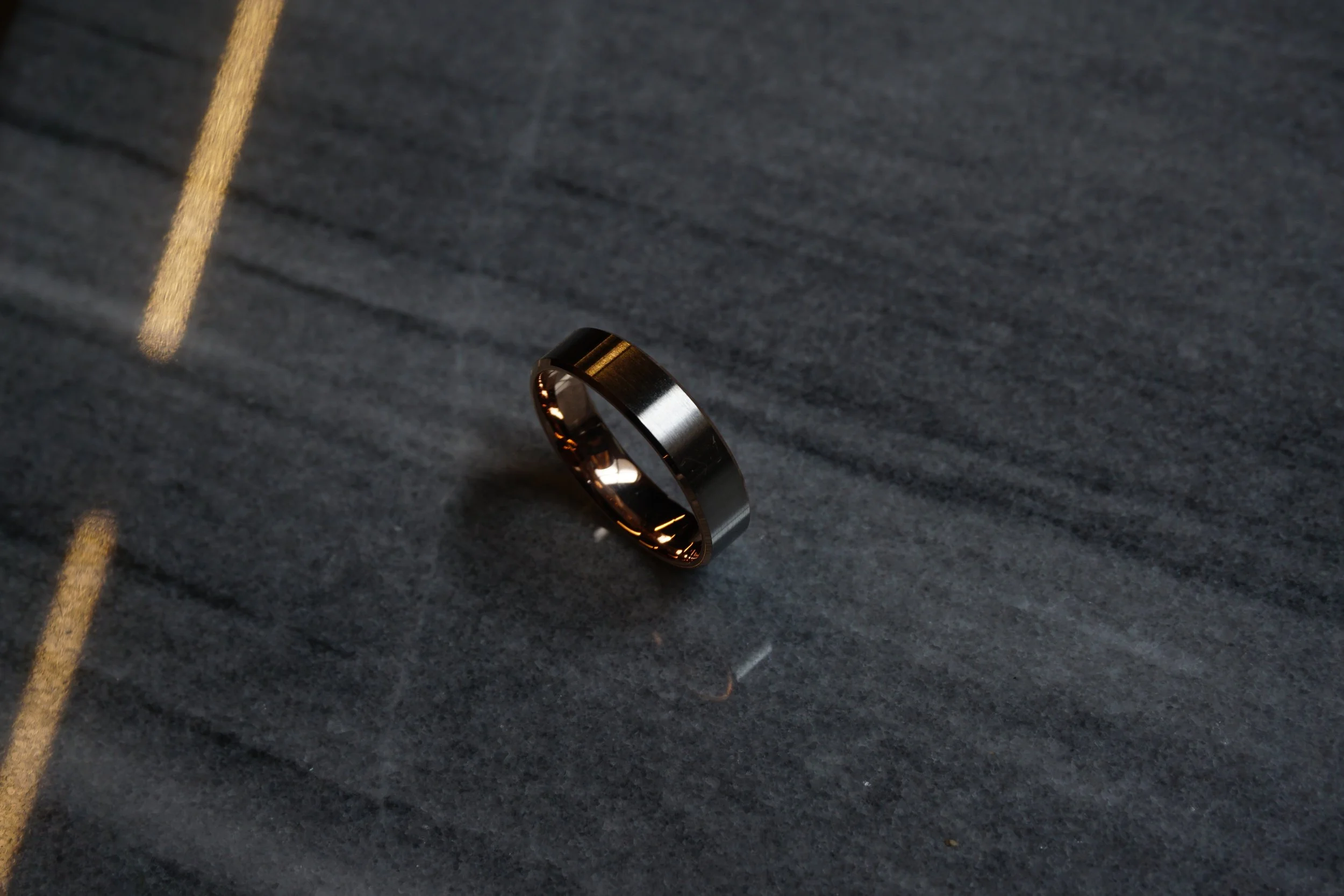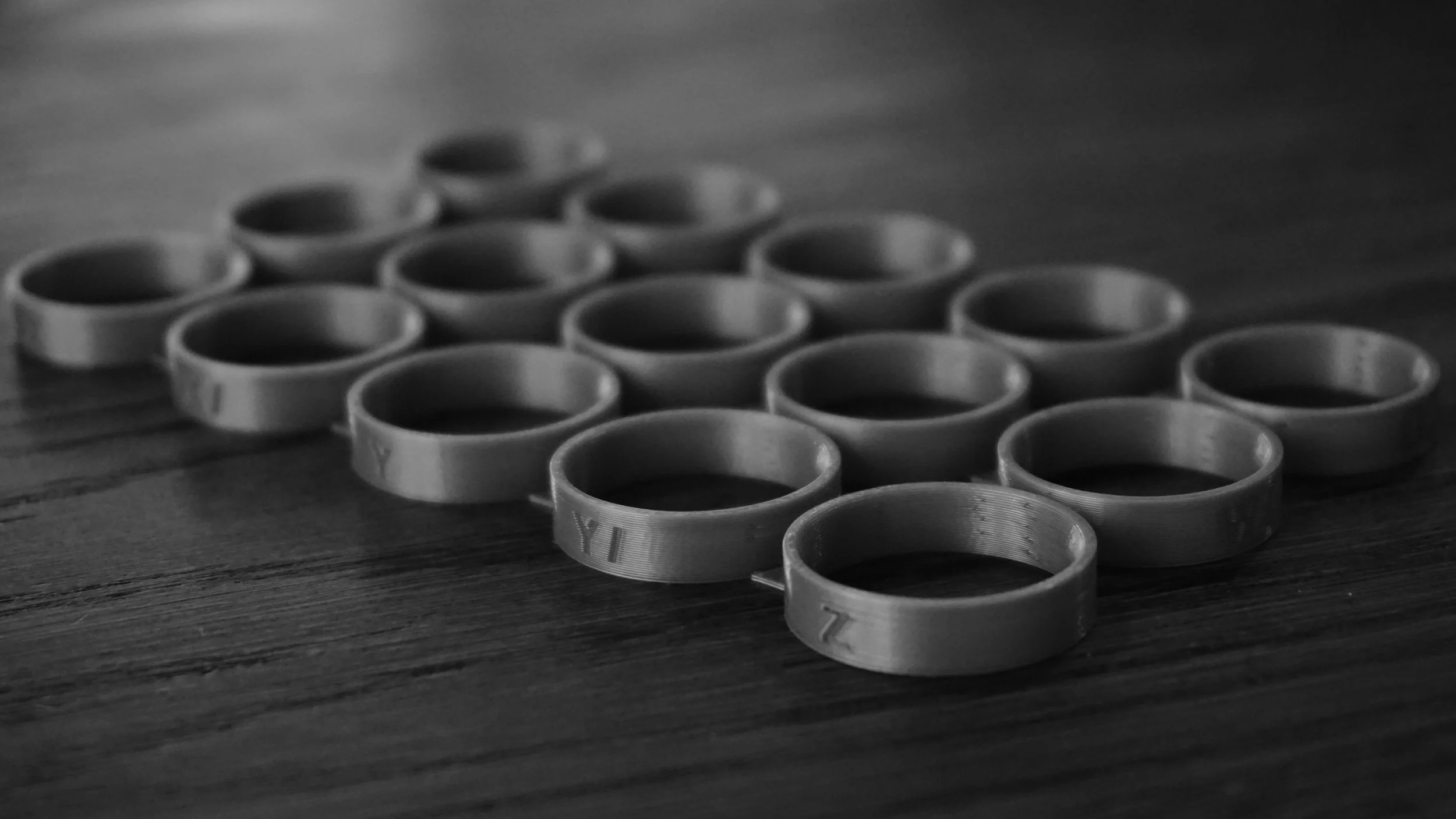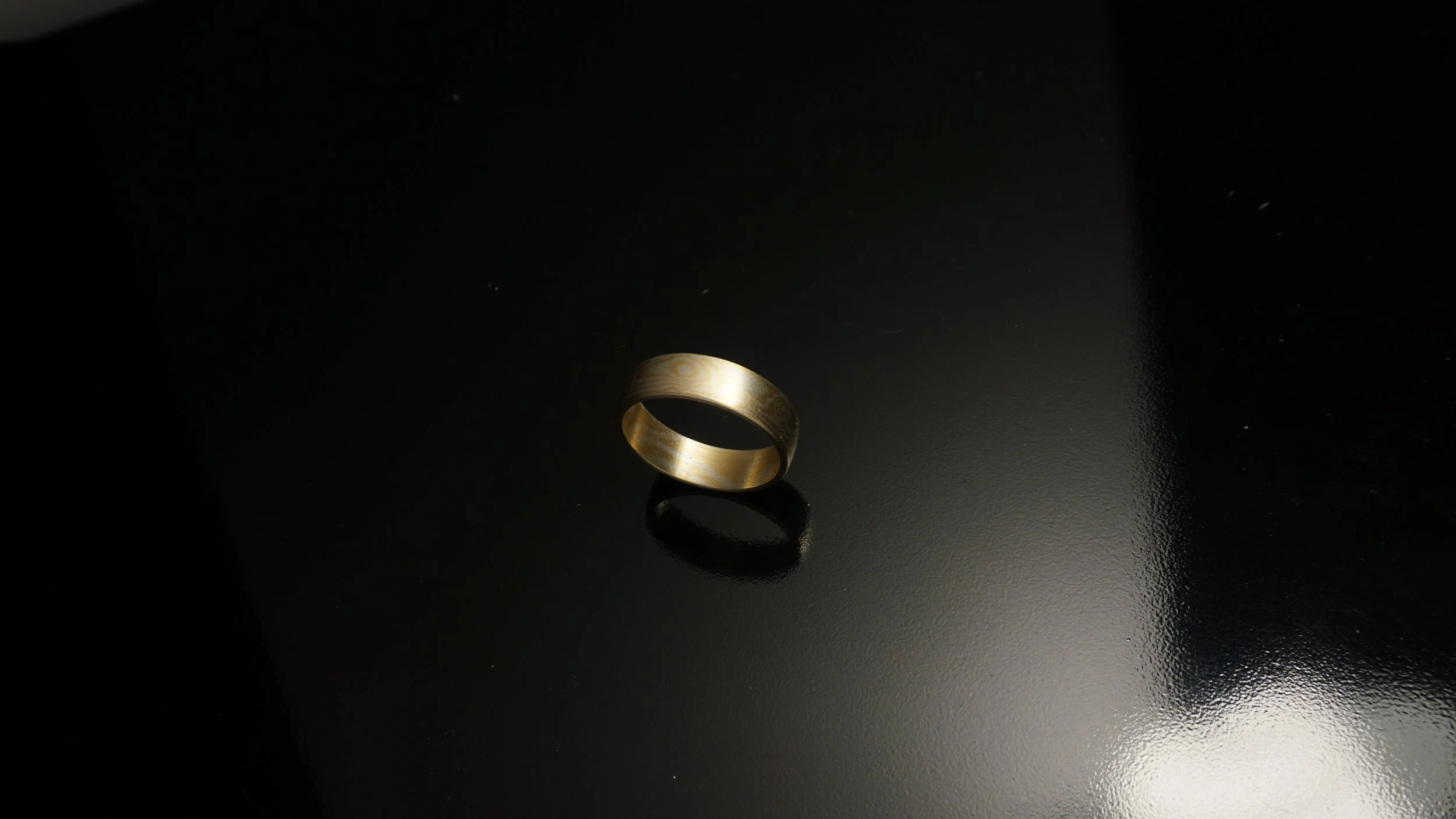 Image 1 of 7
Image 1 of 7

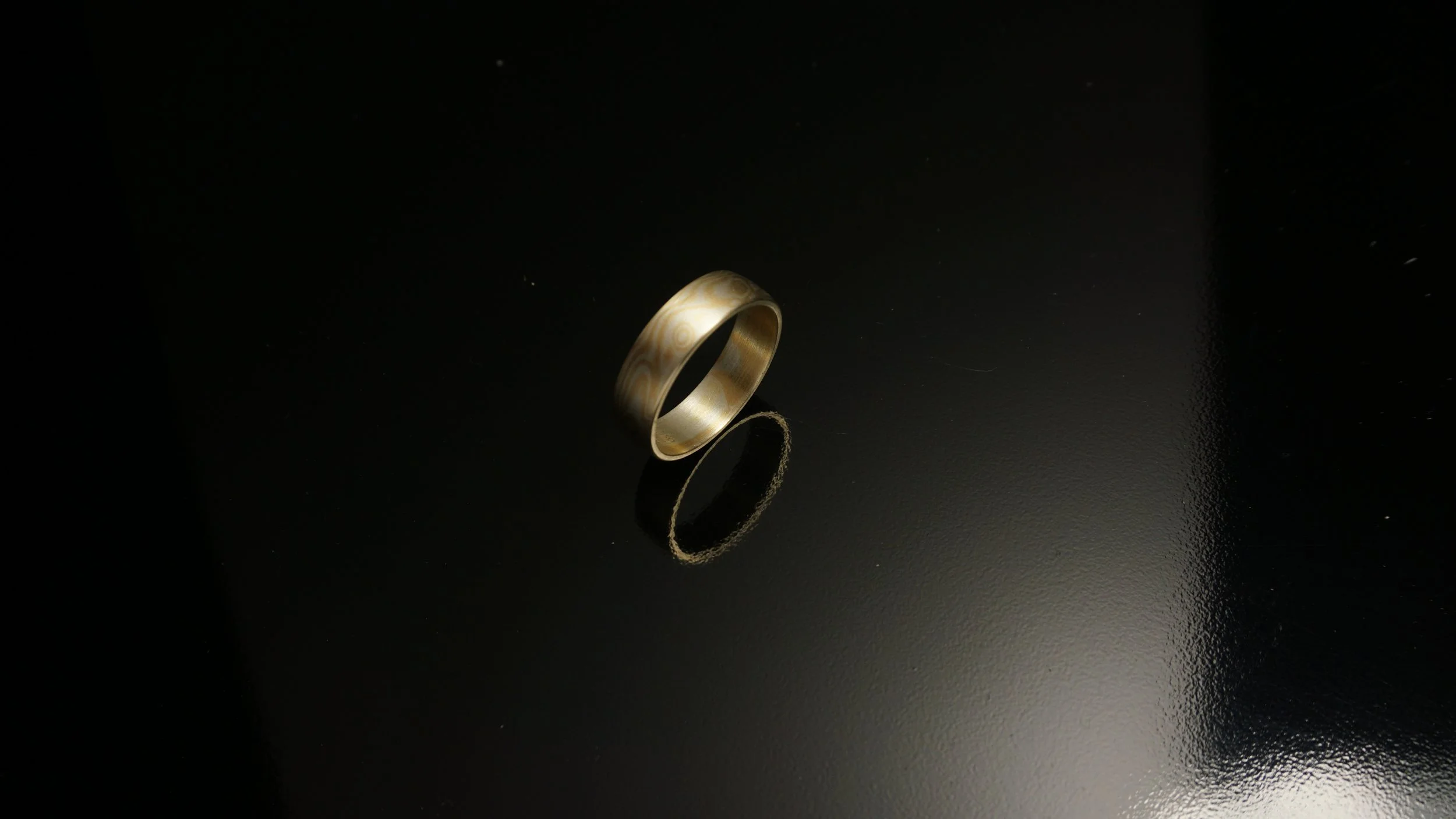 Image 2 of 7
Image 2 of 7

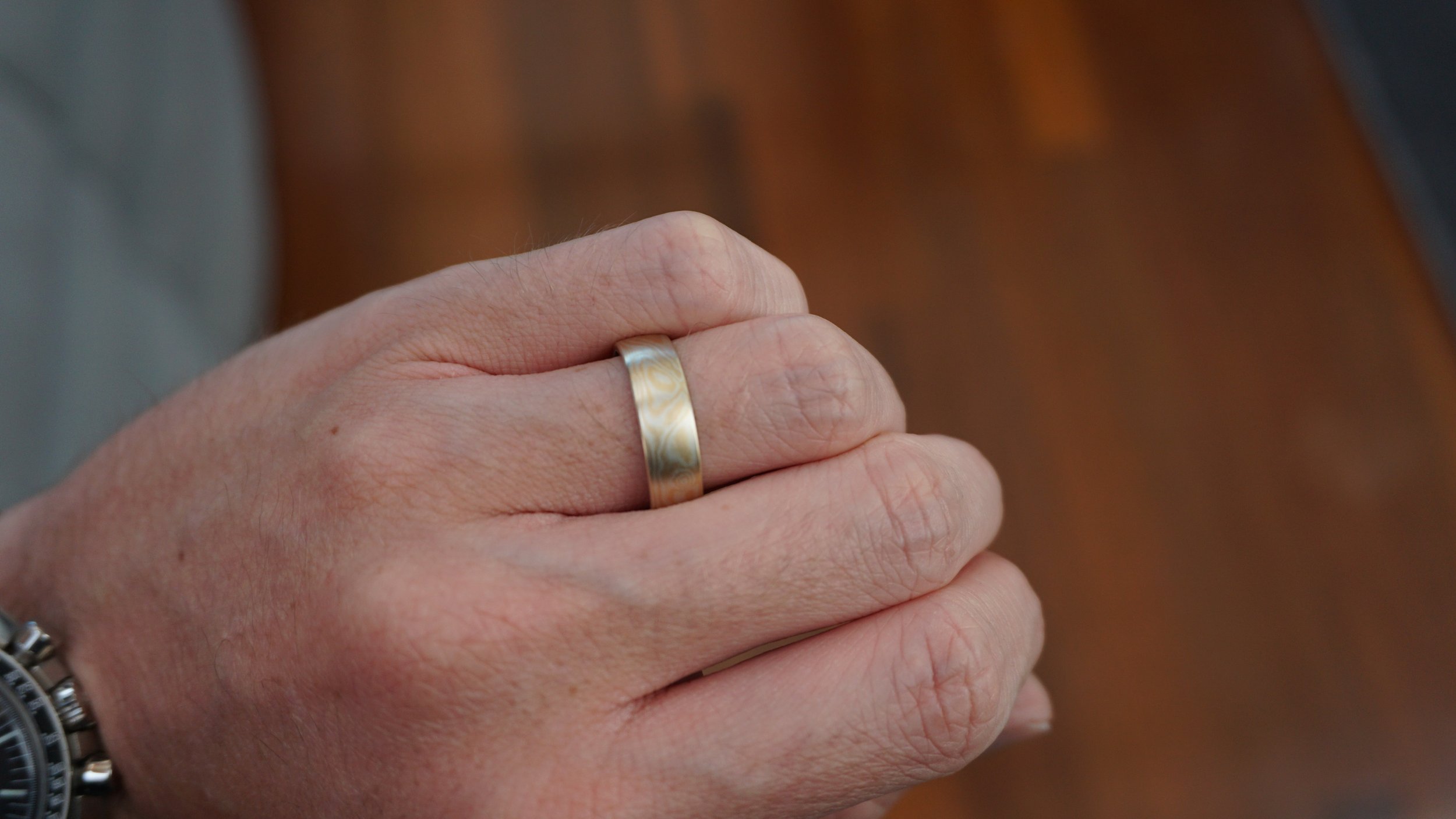 Image 3 of 7
Image 3 of 7

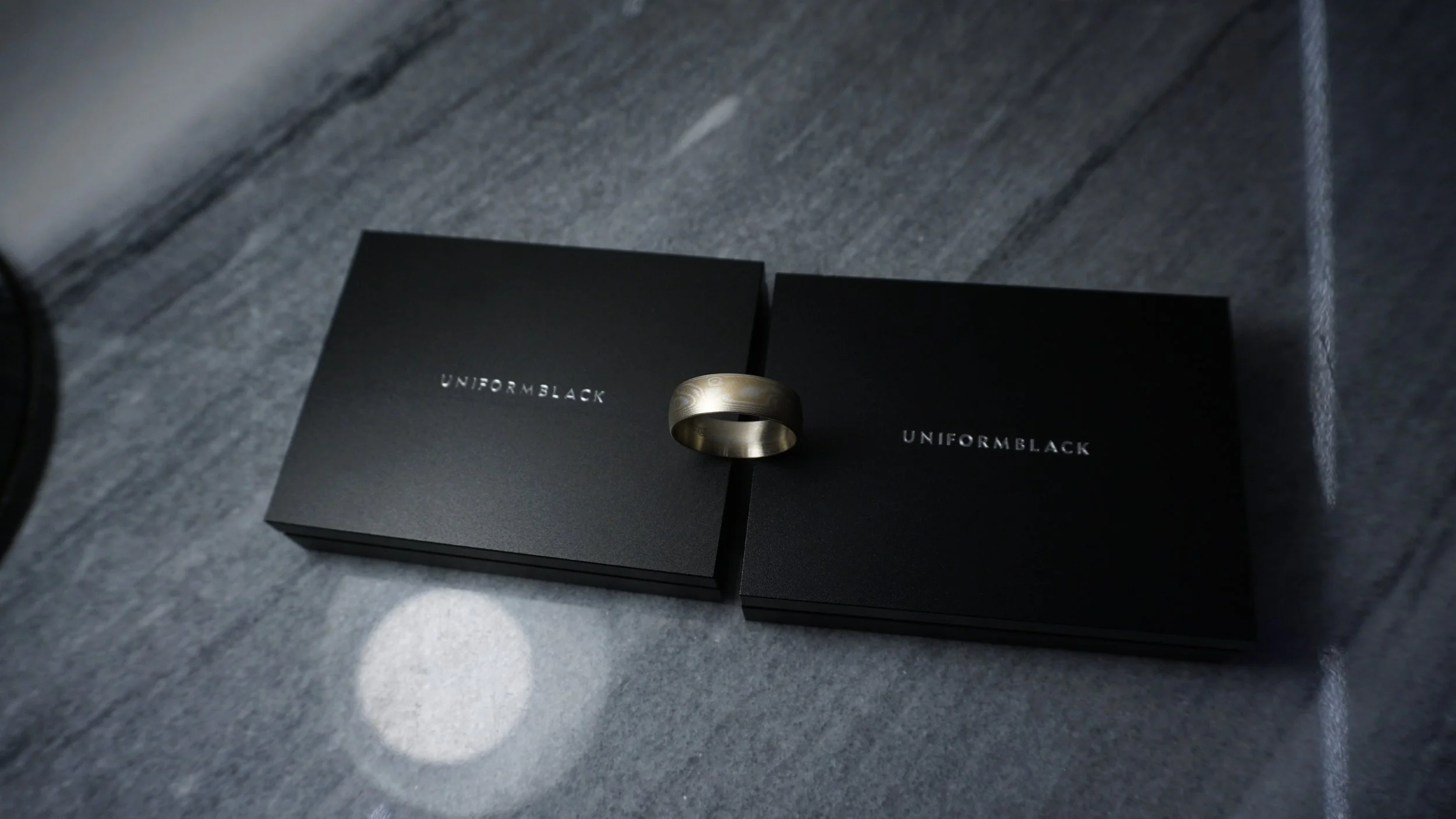 Image 4 of 7
Image 4 of 7

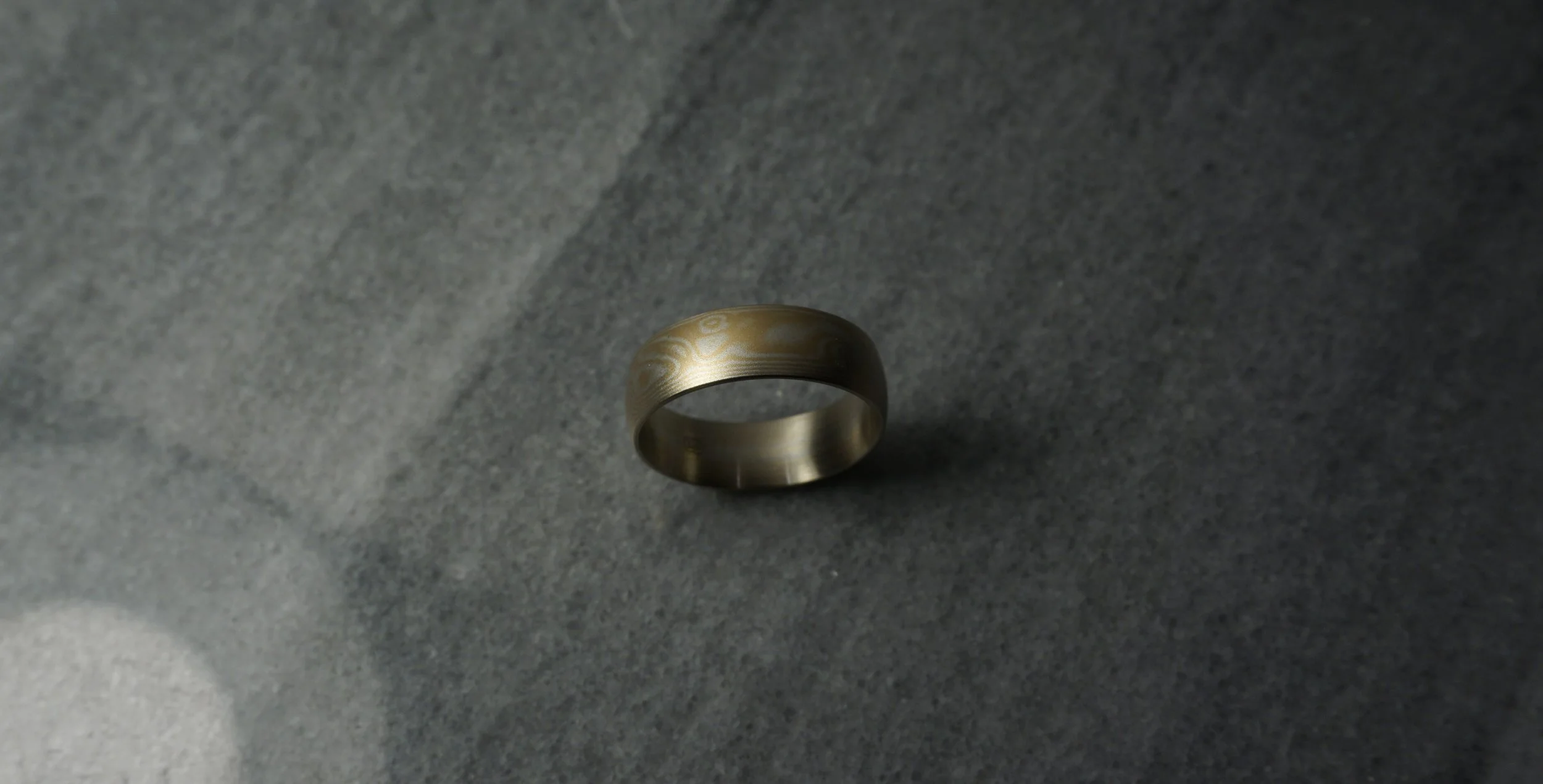 Image 5 of 7
Image 5 of 7

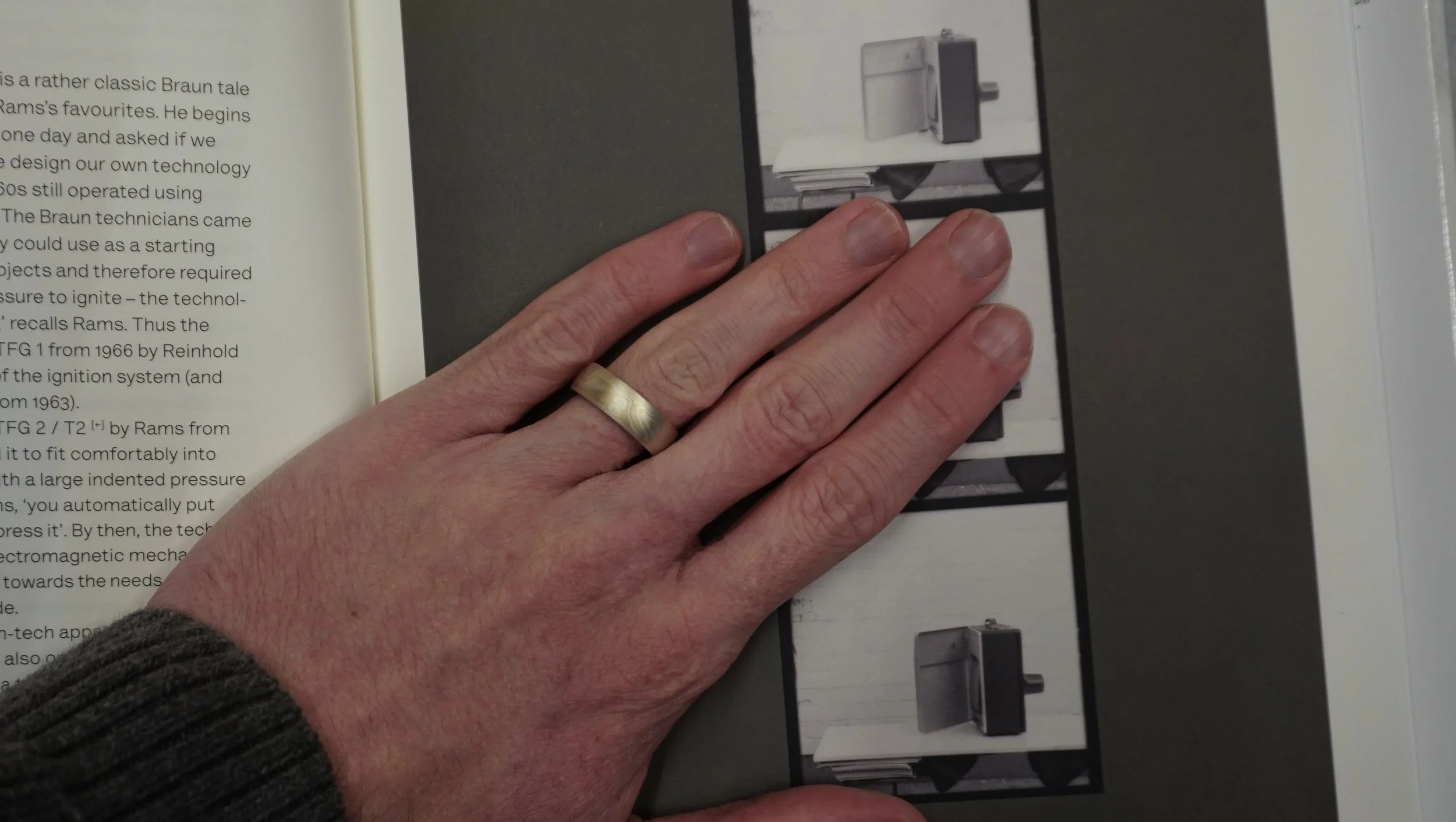 Image 6 of 7
Image 6 of 7

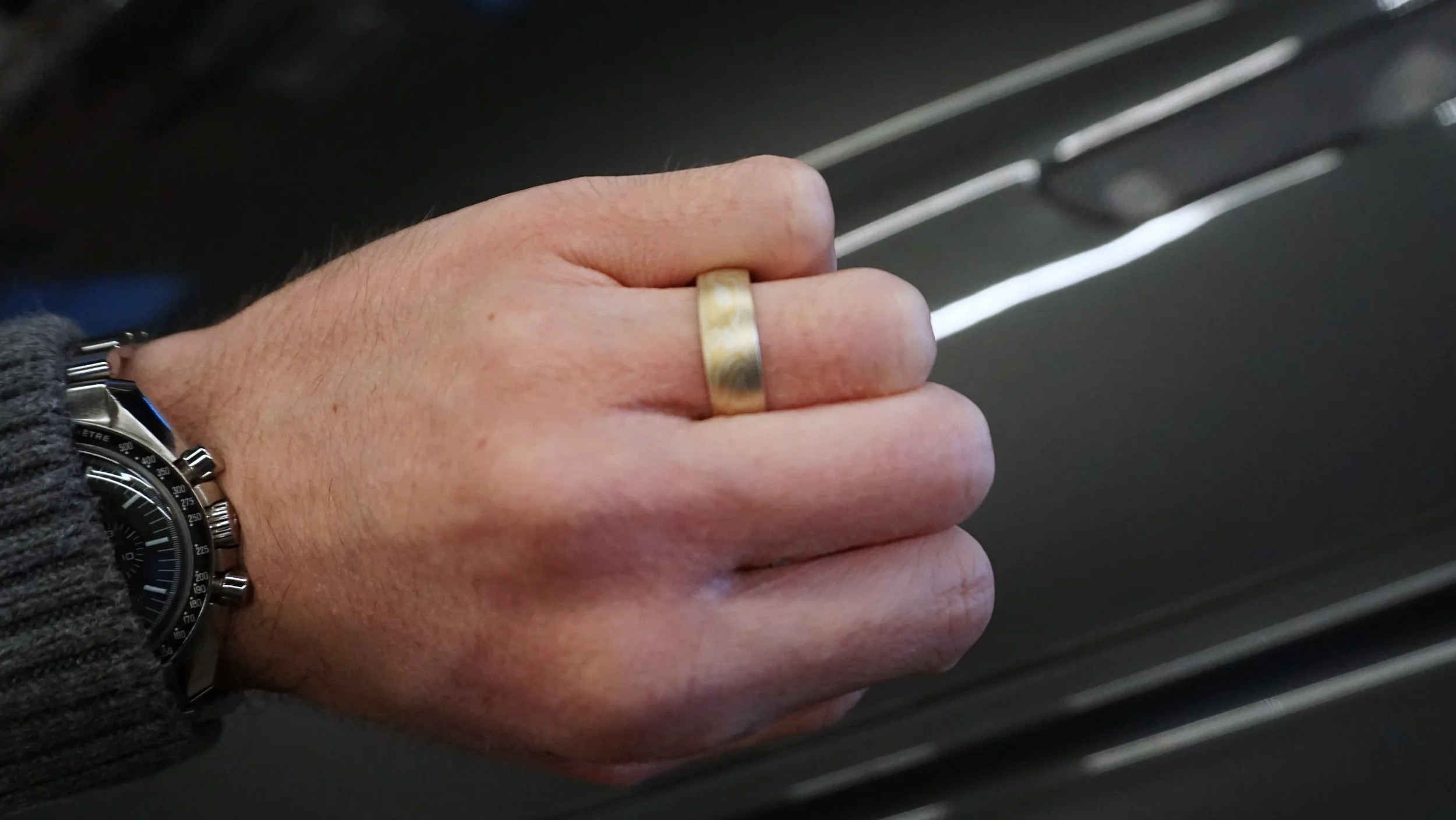 Image 7 of 7
Image 7 of 7








Mokume-Gane
An ancient Japanese technique originally used for crafting swords and artwork hundreds of years ago.
The methods for crafting mokume-gane rings have evolved with technology.
To create a ring like this, multiple alternating flat layers of 9ct white gold and 9ct yellow gold are stacked just like licorice allsorts.
These layers are then fused together using a process called solid state diffusion bonding.
The alternating billet has now become one solid piece of metal. It is then twisted, deformed and forged to produce the undulating pattern.
The complex and laborious processing of the metals creates a wood-grain like mixture of the two metals, through the full thickness and width of the ring.
Damascus steel employs a similar technique with two different grades of steel with some important distinctions.
Damascus steel requires acid etching to partially corrode away one of the steels in the mixture to create a contrast, otherwise both steels would look the same.
Acid etching also creates considerable texture on the surface where one of the metals has been eaten away, so the surface is not smooth.
mokume-gane does not require acid etching, as the metals themselves have different colours.
This also means the surface of this ring is smooth and seamless.
The combination of 9ct yellow and white gold forms a low contrast and subtle pattern.
The pictured ring features a subtly domed outer profile to highlight the pattern, with a comfort fit inner profile.
The pictured ring is 6mm in width and 1.6mm in thickness.
No two rings will ever look the same.
An ancient Japanese technique originally used for crafting swords and artwork hundreds of years ago.
The methods for crafting mokume-gane rings have evolved with technology.
To create a ring like this, multiple alternating flat layers of 9ct white gold and 9ct yellow gold are stacked just like licorice allsorts.
These layers are then fused together using a process called solid state diffusion bonding.
The alternating billet has now become one solid piece of metal. It is then twisted, deformed and forged to produce the undulating pattern.
The complex and laborious processing of the metals creates a wood-grain like mixture of the two metals, through the full thickness and width of the ring.
Damascus steel employs a similar technique with two different grades of steel with some important distinctions.
Damascus steel requires acid etching to partially corrode away one of the steels in the mixture to create a contrast, otherwise both steels would look the same.
Acid etching also creates considerable texture on the surface where one of the metals has been eaten away, so the surface is not smooth.
mokume-gane does not require acid etching, as the metals themselves have different colours.
This also means the surface of this ring is smooth and seamless.
The combination of 9ct yellow and white gold forms a low contrast and subtle pattern.
The pictured ring features a subtly domed outer profile to highlight the pattern, with a comfort fit inner profile.
The pictured ring is 6mm in width and 1.6mm in thickness.
No two rings will ever look the same.
How long does it take to make?
4 weeks is our standard lead time. Titanium and zirconium rings can be faster. Let us know during checkout when you need your ring, and we’ll aim to meet your deadline.
Getting the width right.
Choosing the most appropriate width for your hand online is near impossible. That’s why we’ll send you a 3D printed set of width options ranging from 4-8mm. Confirm your width before we begin production. Depending on the chosen ring, this may increase or decrease the price. We’ll confirm with you first.
What if I don’t like it?
If you don’t like your ring (unlikely), we’ll give you a full refund or exchange for another design, even though they are custom made to order.
What if it doesn’t fit right?
You’re entitled to one free resize, sometimes this requires a complete remake of the ring, which is also included.
Packaging
All rings come with our in-house designed, machined billet aluminium ring case.
A quality ring deserves a quality case. No wood or paper here.
3D Printed Sizing Rings Included.
Our 3D printed sizing rings allow you to find your size in the convenience of your home and come included with all orders.
In fact we find this process more accurate than going to a store to be sized. You get the opportunity to try the sizes in the specific width of the ring ordered, and over a longer span of time.



